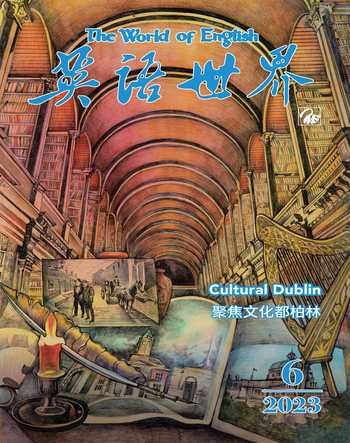Master’s Mural Hidden in a Sydney Bottle Shop隐于悉尼一酒窖的大师壁画
伊丽莎白·福蒂斯丘 张祺/译
Customers browsing the shelves at Elizabeth Bay Cellars, an upmarket eastern suburbs bottle shop, would be startled to know they are standing just metres away from an early work by one of the most revered Australian artists of the modern era.
在悉尼东郊的一家高档瓶售酒商店“伊丽莎白湾酒窖”,浏览货架选购酒品的顾客会惊讶地发现,距离他们所站之处不过几米开外,就是澳大利亚一位最受尊敬的现代艺术家的一幅早期作品。
This forgotten mural, mostly hidden behind the walls of the shops coolroom, is by the late Jeffrey Smart, whose work was celebrated in a centenary exhib-ition at the National Gallery of Australia opening on December 11, 2021.
这幅被遗忘的壁画由已故大师杰弗里·斯马特创作,画作大部分隐藏在商店冷藏室的墙壁后面。2021年12月11日,澳大利亚国立美术馆(NGA)为斯马特举办了一次百年诞辰纪念展以作庆贺。
The story behind how the work of the master, who was feted for his geometrically precise urban landscapes, ended up in Elizabeth Bay goes back some 70 years.
这位大师因其城市景观绘画的几何精确性而备受赞誉。其作品为什么会出现在伊丽莎白湾,背后的故事可以追溯到大约70年前。
In 1951 Smart, then a young, impoverished artist, arranged to paint an interior mural at Milanos restaurant in return for meals.
1951年,当时的斯马特还只是一个贫穷的年轻艺术家,为换取伙食,他准备为米拉诺餐厅作一幅室内壁画。
After Milanos changed hands in March 1958 to become the plush eatery Primos Lafayette, Smart again worked on the murals. Its unclear whether he started again or merely touched up the earlier work. Either way, the finished murals depicted an Italian priest in a Capello Romano hat guiding a visiting family to landmarks such as the Leaning Tower of Pisa and the Forum Romanum.
1958年3月,米拉諾餐厅易主成为普里莫拉斐特豪华餐厅,斯马特再度为餐厅创作壁画。他是创作了一幅全新作品,还是仅仅润色了先前的作品——目前并不确知。无论哪种情况,完成的壁画描绘的就是一位戴着卡佩罗罗马帽的意大利牧师,他正带领来访的一家人参观比萨斜塔和古罗马广场等地标。
The cassocked priest and the little family looked down over a cavalcade of monied diners until the early 1980s, when Primos closed and businessman Michael David took over the building, opening Elizabeth Bay Cellars.
那位身着长袍的牧师和成员稀少的这一家人多年来一直俯视着熙来攘往的富豪食客们,直到20世纪80年代初,普里莫餐厅关闭,商人迈克尔·戴维接管了这座建筑,开设了伊丽莎白湾酒窖。
To install a walk-in coolroom, David demolished one interior wall of Primos dining room along with its mural. The mural on the opposing wall remained, but was mostly covered over when the coolroom was installed.
为了安置步入式冷藏室,戴维拆除了普里莫餐厅的一面内墙及其壁画。对面墙上的壁画虽然保留了下来,但冷藏室建好后,大部分壁画都被遮住了。
But now Dr Rebecca Edwards, co-curator of the exhibition Jeffrey Smart at the NGA, says the work must be saved. “They might not be the greatest examples of Smarts work, but they do represent a really key part of Australian art history that is under-explored because its not well represented,” she said.
不过现在,NGA杰弗里·斯马特展览的联合策展人丽贝卡·爱德华兹博士表示,必须挽救这幅作品。她说:“它们可能不是斯马特最伟大的作品,但它们确实代表着澳大利亚艺术史中一个非常重要的部分——这部分历史没有很好地展现给世人,所以也没有得到充分探索。
“Weve got to keep the traces that we do have if were ever going to be able to piece it back together. Mural paintings by nature are quite ephemeral. As soon as the buildings demolished, or someone renovates, theyre gone.”
“如果想把这段历史拼齐复原,就必须保护好我们目前所拥有的遗迹。就其本质而言,壁画可以说寿命短暂。建筑物一旦被拆除,或有人进行翻修,附着其上的壁画就会随之消失。”
Barry Pearce, former head of Australian art at the Art Gallery of NSW, admits he has changed the opinion he formed of the Primos murals in the 1980s, when he was called in to assess them for possible removal and preservation.
新南威尔士州美术馆澳大利亚艺术部前主管巴里·皮尔斯承认,他已经改变了20世纪80年代自己对普里莫壁画的看法,当时他曾被要求评估这些壁画是否可能被转移保护。
“I now think they are far more interesting than I did,” Pearce said. “In retrospect I find them quite charming and they show you (Smarts) draughtsman skill. Its amazing, really.”
“我现在认为它们比我原来想象的要有趣得多。”皮尔斯说,“回想起来,我觉得它们非常令人着迷,它们展示了(斯马特的)绘画技巧。这真的很神奇。”
Pearce recalls Michael David contacting AGNSW after buying the building, thinking the murals might be worth saving. Pearce said then director Edmund Capon was not in favour because of the tens of thousands of dollars involved. Pearce also contacted Smart, who wrote back that “the so-called murals are simply not worth all the bother and I would rather they were demolished”.
皮尔斯回忆说,迈克尔·戴维在买下这座建筑后,认为这些壁画可能具有留存的价值,于是联系了新南威尔士州美术馆。皮尔斯说,时任馆长埃德蒙·卡彭对此并不赞成,因为该项目要花费成千上万。皮尔斯还联系了斯马特,斯马特回信称:“那些所谓的壁画根本不值得这样大费周章,我宁愿它们被拆除。”
Smarts comment must be taken in the context that he thought every painting he started was “doomed to failure”, Pearce said.
皮爾斯说,斯马特的评论必须放在一定的背景下考虑,即他一向认为自己创作的每一幅画都“注定要失败”。
“He kept comparing himself to the great Renaissance painters that he was living among (in Italy),” he said.
他说:“斯马特曾定居意大利,他总把自己与同样生活在意大利的文艺复兴时期的伟大画家作比较。”
Dr Edwards said the Primos mural links Smart, who died in his adopted home of Tuscany in 2013, firmly to the French “Tubist” and muralist Fernand Léger, whose classes Smart attended in Paris in 1949—50.
斯马特于2013年在第二故乡托斯卡纳的家中逝世。爱德华兹博士表示,普里莫的壁画将斯马特与法国“以管状组合呈现物象”的立体派壁画家费尔南·莱热紧密联系在一起。1949至1950年间,斯马特在巴黎曾上过莱热的课。
“Smarts working really closely with Léger, and he returns to Australia and settles in Sydney. In that decade he paints about eight mural schemes, which is not well known because they dont really exist,” Dr Edwards said.
爱德华兹博士说:“斯马特与莱热的合作非常密切,后来他回到澳大利亚并定居悉尼。在那10年里,他绘制了大约8幅壁画的草图,但这并不广为人知,因为它们并不真实存在。”
Smart didnt go in for art prizes but he graciously wrote to Francis Giacco in 1994 when Giacco won the Archibald Prize. Next time Smart was in Sydney, he and Giacco viewed the remains of the murals together.
斯马特对艺术奖并不感兴趣,但当弗朗西斯·贾科1994年获得阿奇博尔德奖时,他却亲切地写信祝贺贾科。当斯马特再次来到悉尼时,他和贾科一起欣赏了残存的壁画。
“I dont think he took them too seriously,” Giacco said.
“我觉得他不太把这些壁画当一回事。”贾科说。
Stuart Purves, whose Australian Galleries has represented Smart since the 1970s, said the Primos mural should be saved.
斯图尔特·珀维斯的澳大利亚画廊自20世纪70年代以来一直为斯马特做代理,他认为普里莫的壁画应该保存下来。
“Why dont we get this mural back?” Purves said. “Its to do with the growing up of the cultural attitude of Australia. Its a test of our cultural courage.”
“我们为什么不把这幅壁画复原取下来?”珀维斯说,“它与澳大利亚文化态度的发展息息相关。这是对我们文化勇气的一次考验。”
(译者为“《英语世界》杯”翻译大赛获奖者)

